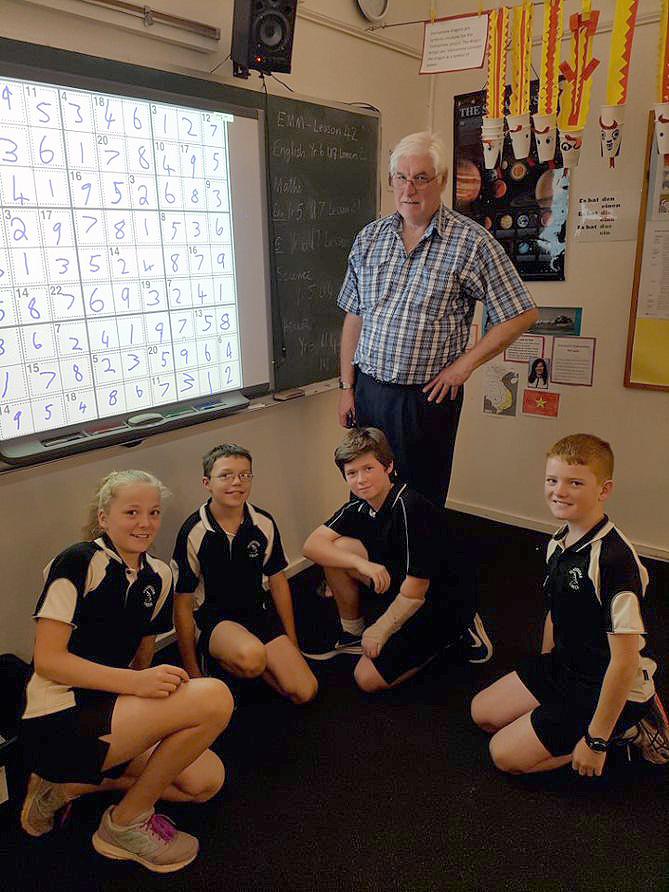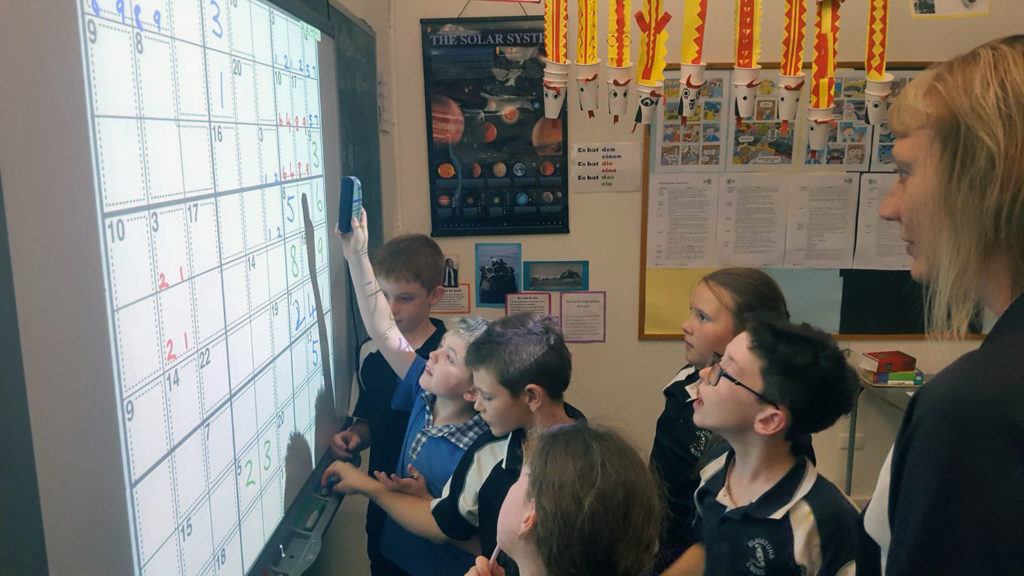
Steve running a Killer Sudoku activity with students for STEM Professionals in Schools.
“The satisfaction of solving a difficult problem using mathematical reasoning is hard to beat.”
Associate Professor Steve Sugden’s passion for maths has served him well through his long and varied career. From working as a chemistry lab technician to designing technical software for electricity authorities, Steve’s interest in maths was steadfast. But another passion influenced his career trajectory, leading him back to the university sector time and again.
“Working on an interesting research or consulting problem can be very satisfying, but I enjoy teaching a group of interested students even more than that,” Steve said.
Steve has spent many years enthusing university students with what he calls “the beauty, power and usefulness of maths”. It is something he continues to do voluntarily. These days he teaches much younger students through our STEM Professionals in Schools program.
The program partners him with school maths teachers, allowing him to bring his considerable experience and expertise to local classrooms.
A killer approach to teaching maths
Over the years, Steve has worked with many teachers to run unique maths-based classroom activities. Activities include solving equations with colours, looking for patterns in the multiplication table and “The Theory of Yes or No”. The use of Excel illustrates these topics.
“I have had to come up with unusual ways of teaching mathematical material in a way that will be remembered and enjoyed by the students. Games and puzzles are a big part of my approach,” Steve said.
A favourite is Killer Sudoku, which provides different clues to ordinary Sudoku. The typical solution process has a much richer mathematical structure than ordinary Sudoku, particularly for learning reasoning skills.
“A prominent skill learned in this game is ‘reasoning by contradiction’ or reductio ad absurdum. This is a fundamental principle used every day by working scientists and mathematicians. It’s also used by everyday people in all walks of life, though most do it almost subconsciously,” Steve said.
“In my view, this and related topics are probably more useful than calculus for most school leavers. In the 21st century, people need to know the basics of discrete maths: probability, number theory and applications to DNA analysis, security, cryptography, and so on. Knowing a bit about how binary works is also very useful, both as mathematics and as an insight into how computers work. These, and similar topics, lay the foundation for further studies leading to careers in a wide range of fields.”
“I enjoy it most when I am teaching a topic of which I have a deep understanding, and ideally some practical experience of using it in a real-life application. Often, such applications abound, and my idea of a good maths teacher is one who can relate the abstract theory to practical examples and problems,” he said.

Students playing Killer Sudoku.
A lightbulb moment the most rewarding
“The biggest benefit to teaching maths is to see the light go on for the students; when it becomes clear that they ‘get it’. That is always a special moment. Sometimes it is verbalised, but often it is just a smile, or perhaps just a gleam in the eye,” Steve said.
“A career highlight is when I see a class catch on to a new idea or concept I have shown them, and then go further with it and show me something I hadn’t seen before. This has happened on a few occasions in my career and it is just wonderful. I have experienced this in the STEM Professionals in Schools program, and it has been an honour every time.”
Steve recently spoke at a panel event for STEM Professionals in Schools. He shared more about his career and his partnership activities. Watch the video to find out more.
Want to join STEM Professionals in Schools?


4th August 2022 at 1:14 am
As I read through this post on math, I can’t help but be amazed at all the fascinating details I’m learning. Each new fact makes me even more excited to learn more about this topic. You’ve written so well that I feel like I could actually understand math. now!
I know there are other great resources out there for learning math, so I’m going to check them out now. But before I go, I just want to say thank you for sharing all of this information with us. It’s really helped me understand math in a whole new way.
12th April 2021 at 8:40 am
It’s always great to see innovate and practical ways to teach maths to students and Steve has always hit the mark in leading the way for this in his partnerships with schools. Wonderful to see a popular puzzle like Sudoku being used to develop students’ reasoning skills.